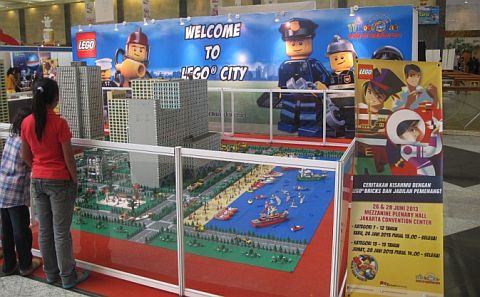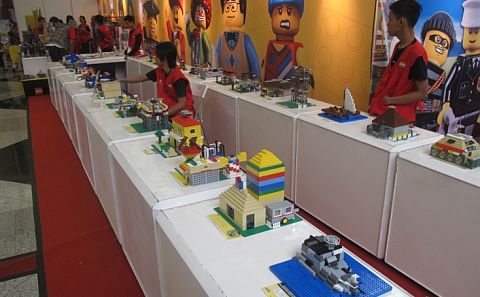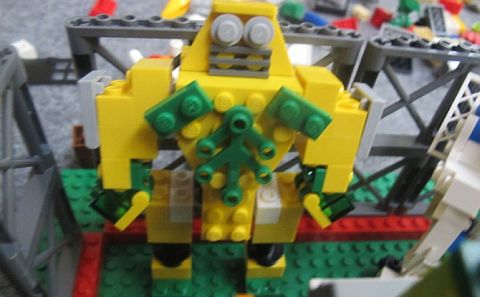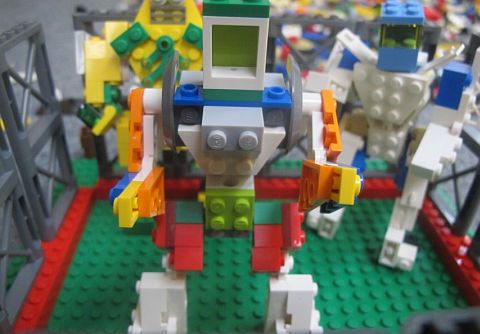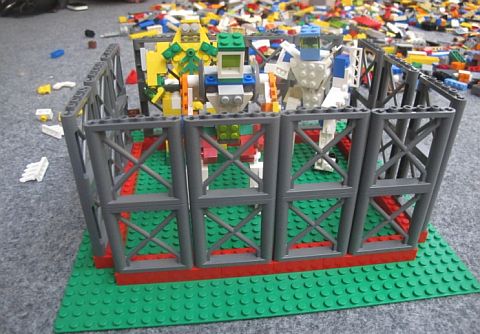(Written by William)
In this Brick Breakdown series I review official LEGO sets, from the perspective of looking at interesting building techniques we can all learn from. Today we will be looking at the Largest LEGO Lord of the Rings sets to date, the #10237 LEGO Lord of the Rings Tower of Orthanc. You can also check out the previously discussed LEGO building techniques found in official LEGO sets at the end of this article. 🙂

When you first look at price-tag of the LEGO Lord of the Rings Tower of Orthanc, it’s hard to believe that it only comes with five minifigures. However after building the set it becomes very clear where the money went; this tower is immense in both size and detail. The thing is, since so much of the tower is black, you really need to get in close to see the loving touches that make every level of the tower so unique.
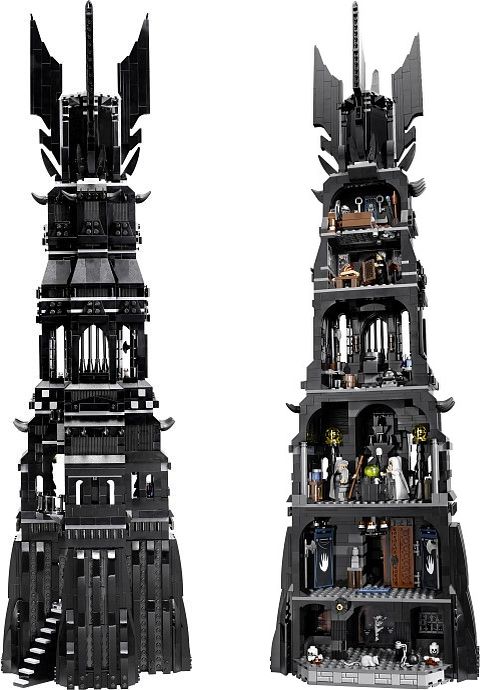
This is the largest tower I’ve seen in minifigure-scale that LEGO sold to the public. I did see a larger version of the Tower of Orthanc that was about eight feet high; I even have a picture of me standing in front of it. As cool as that was, I think I prefer having the smaller version. We can talk about the LEGO Lord of the Rings Tower of Orthanc for hours; how cool it is, and all the many features and details. Here however, in the tradition of this Brick Breakdown series, we will focus on the unique building-techniques used. Even as far as techniques we could cover a lot more as this is a massive set, so I will just show you the ones that stood out the most to me while building. For the official introduction of the #10237 LEGO Lord of the Rings Tower of Orthanc, along with the designer-video check here: LEGO Lord of the Rings Tower of Orthanc – First View
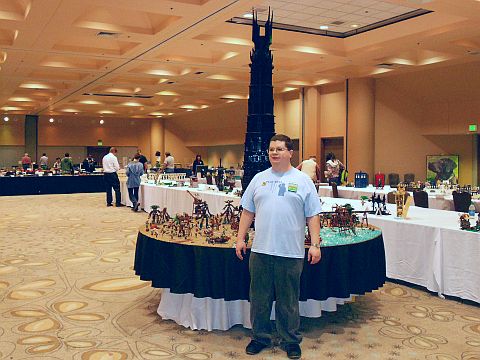
➡ ALL IN THE EYES…
This is an interesting design-tip that comes from Tree Beard. Without a doubt, he is a fantasy creature who only has a vague resemblance to a humanoid. Yet it is easy to make out his face and recognize him. The reason why this works has little to do with the arms and legs of the character. The key feature is the eyes. We may not realize it, but one of the first things we look for when making out a creature are those little orbs in the head. Partly this is to tell us what the person or creature is feeling. This can be anything from recognition to fear, happiness to anger, and so on. There is a reason why the eyes are referred to as “windows to our soul”. Using the eyes as an anchor point we begin to make sense of the rest of the creature. This is probably why LEGO didn’t take any chances with Tree Beard; they simply printed the eyes right on the tiles that are mounted to his face. Now you can look past all the wood-grain texturing LEGO has built into the model and make out the nose, beard, and general character of the wooden giant.

➡ TURNED LEGO PLATE TECHNIQUE
This is a LEGO technique used rarely, but it does appear in official LEGO models from time to time. We see it in the LEGO Tower of Orthanc in the trophy-room. In the left and right corners you can see a 2×2 plate. On top of this plate is a 1×1 round plate and a modified plate with clip, turned diagonally from the small round. This assembly is than sandwiched with a second 2×2 plate to lock everything down.
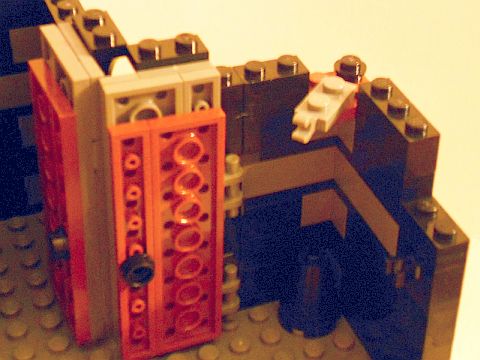
It is important to point out you can use this technique with a square 1×1 plate instead of the round, but it will mean you have to turn it as well to give you enough room. The small round is important since it does not force you to displace any more LEGO pieces around the assembly. The way the technique is used here is the most traditional. It is also the smallest way to implement the technique without altering the other pieces around it. Then when you are done, you have a very seamless angled connection-point that has not disrupted any straight lines.
➡ ENLARGING 2 TO 5 SIDEWAYS BUILDING
In reviewing the LEGO Super Heroes Arkham Asylum Breakout (see link at the end of this post), we looked at the mathematical counting method you can use for sideways building. Just to remind you, it translates to two studs for every five plates of thickness. The LEGO Lord of the Rings Tower of Orthanc also features this technique in the vertical tiles to the left and right of the tall barred windows. It also uses a simple version of the technique near the base of the tower, before all the side paneling gets placed on; using those 1×4 bricks with studs on the side, as well as a few other modified bricks with sideways studs.
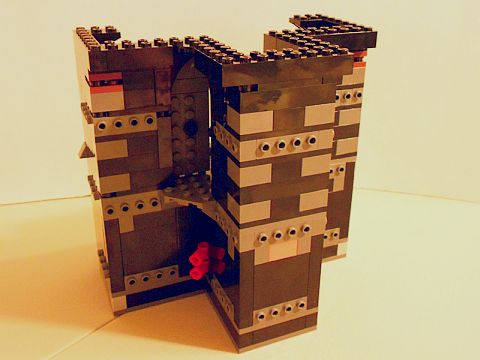
Start with one of the 1×4 bricks with studs on the side, then add four regular LEGO bricks on top of it, then finish it off with another special 1×4 brick. That’s it. The top and bottom sideway studs are now exactly seven studs apart, perfect for connecting them with a plate or brick now facing sideways. This example still uses the 2 to 5 rule, but on a much larger scale. And if you want to make this setup flush with a plate that is eight studs long, just add two plates to the bottom of the first special 1×4 brick. This technique is great for approaching vertical walls in a whole new way.
➡ REPETITION MAKES THINGS BIG
When you tackle such a large scale model as the LEGO Tower of Orthanc, there are two main elements that prevent a beginning builder from achieving something this big. The first issue is creating a good frame to hold your LEGO creation up. This ultimately comes down to using the largest pieces possible and interlocking your bricks. The second issue has to do with repetition. Too many different details will prevent a building from looking right. This means no matter how much detail you put into a model eventually you’re going to have to repeat large sections with similar or the same patterns.
Just take a look at the three large panels for the base of the LEGO Tower of Orthanc; all three are built exactly the same, so are the large spires at the top of the tower. In order to vary this concept a bit, LEGO added unique patterns for each level of the tower, but still you’ll notice that the left and right side of the tower pretty much mirrors each other.

This need for repetition means you will have to have a good quantity of the same type of LEGO pieces to create a convincing large structure. I would recommend those interested in considering building a large LEGO creation to take a look at the parts-list on Peeron or Bricklink for a particular LEGO set that your model is similar to, and see what is the piece-count used by LEGO. This will give you a good idea as to what quantities you’ll really need for your own LEGO model.
➡ APPLYING WHAT YOU LEARN
It is surprising what we as humans can look past in order to make out a face. The eyes are crucial in this regard. So if you plan to make a face out of LEGO, make sure the first thing you work out is the eyes. The rest will be helped by people’s imagination.
As for turning LEGO plates, it is a simple way to break up all those straight lines LEGO elements like to form. Keep in mind that this technique is often better suited for angling small light-weight creations like decorations. Of course when you consider the sheer amount of modified plates that are out there, this technique has a very wide range of possibilities. If you need more examples of this technique being used, look at the various spiders in the LEGO Lord of the Rings line. Nearly every one of them will have turned plates when constructing the legs.
Scaling up the 2 to 5 rule is a handy technique for covering large distances in LEGO creations. LEGO buildings are more likely to benefit from the technique, but a very large vehicle may see its use as well. The issue often comes down to having enough specialty bricks for mounting everything.
In some of my early large scaled LEGO creations, I was not expecting how many times I had to repeat myself. Just keep in mind that over-designing a particular section fine if it does not need to repeat itself too many times. But when you are replicating one stack of bricks over a hundred times, you may want to reconsider your design carefully as this can get costly and also boring to build. On the other hand, repetition does make it much easier to recruit friends and family to help put together your truly large LEGO masterpiece.
So what do you think? How do you like the LEGO building techniques in the LEGO Lord of the Rings Tower of Orthanc set? Have you used any of the techniques discussed here in your own LEGO creations? Feel free to share your own experiences, tips or ask questions in the comment section below! 😉
And you might also like to check out the other reviews in this series:
- Brick Breakdown: LEGO City Dump Truck
- Brick Breakdown: LEGO Monster Fighters Ghost Train
- Brick Breakdown: LEGO Lone Ranger Silver Mine Shootout
- Brick Breakdown: LEGO Lone Ranger Constitution Train Chase
- Brick Breakdown: Ninjago Temple of Light
- Brick Breakdown: LEGO Lone Ranger Colby City Showdown
- Brick Breakdown: LEGO Lone Ranger Comanche Camp
- Brick Breakdown: LEGO Lone Ranger Stagecoach
- Brick Breakdown: LEGO Star Wars AT-RT
- Brick Breakdown: LEGO Arkham Asylum Part 1
- Brick Breakdown: LEGO Arkham Asylum Part 2
- Brick Breakdown: Legends of Chima Polybags
- Brick Breakdown: LEGO Ninjago Samurai Mech
- Brick Breakdown: LEGO City Alarm
- Brick Breakdown: LEGO Battle of Helm’s Deep






